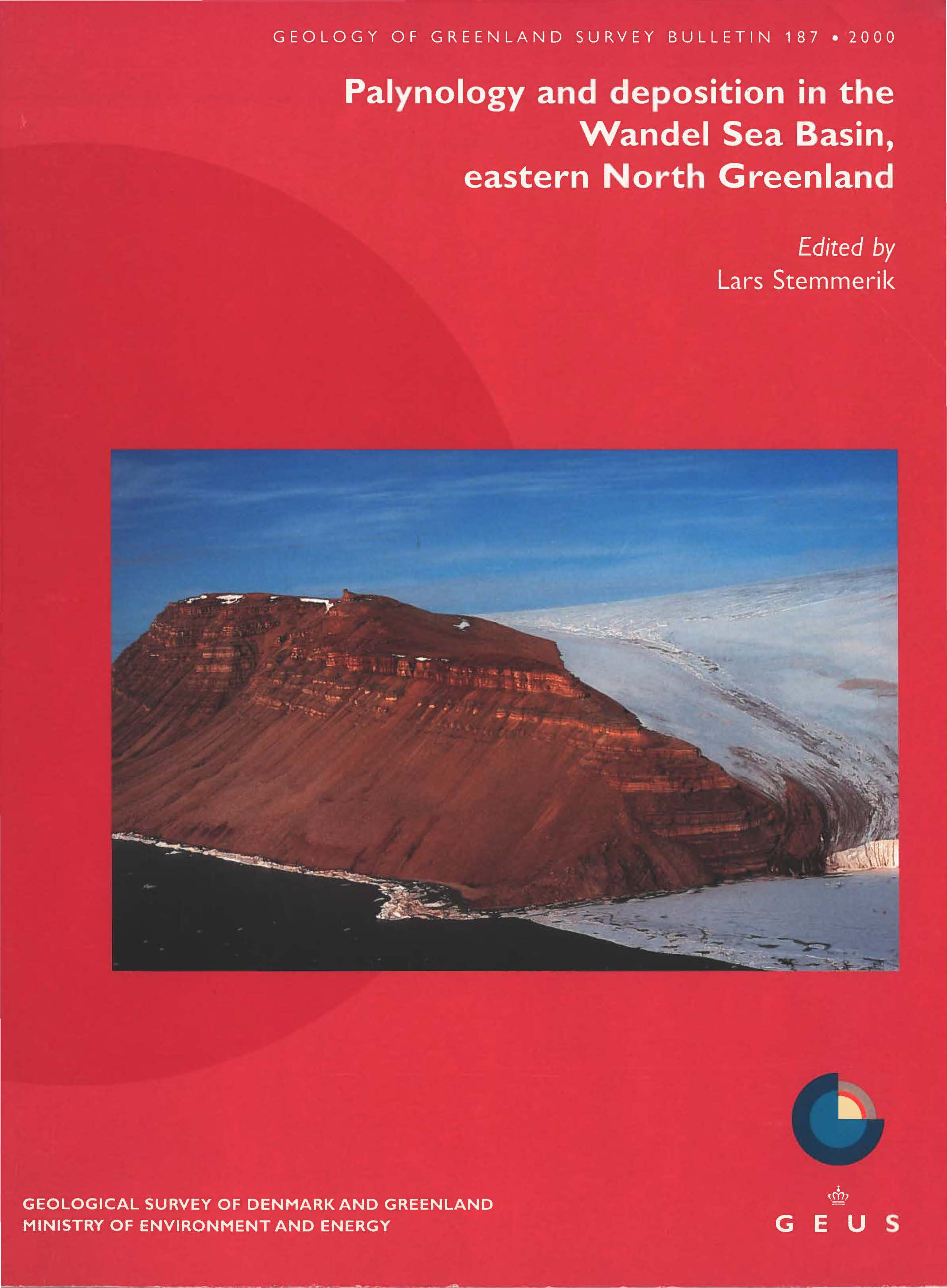Palynology and deposition in the Wandel Sea Basin, eastern North Greenland
DOI:
https://doi.org/10.34194/ggub.v187.5191Abstract
This collection of papers adds to the understanding of the stratigraphic, depositional and structural history of the Wandel Sea Basin in eastern North Greenland (Fig. 1). Most importantly, the ages of the initial (Carboniferous) and final (Palaeogene) depositional events are now much better constrained than previously, allowing correlation with the successions in East Greenland, Svalbard and the Barents Sea. The Wandel Sea Basin was an area of accumulation through the Early Carboniferous to the Palaeogene period, located at the margins of the stable Greenland craton where the Caledonian and Ellesmerian orogenic belts intersect (Fig. 1). Two main epochs of basin evolution have been recognised during previous studies of the basin fill: a Late Palaeozoic – Early Triassic epoch characterised by a fairly simple system of grabens and half-grabens, and a Mesozoic epoch dominated by strike-slip movements (Håkansson & Stemmerik 1989). The Mesozoic epoch only influenced that part of the basin north of the Trolle Land fault zone and its eastward extension (Fig. 1). Thus the northern and southern parts of the basin have very different structural and depositional histories, and accordingly different thermal histories and hydrocarbon potential as exemplified by the tectono-stratigraphic study of northern Amdrup Land by Stemmerik et al. (2000, this volume). This study shows that the Sommerterrasserne fault is the south-eastern extension of the Trolle Land fault zone, dividing Amdrup Land into two areas with different stratigraphic and structural histories. Sediments of the Upper Permian Midnatfjeld Formation are restricted to north-east of the Sommerterrasserne fault where they are conformably overlain by Upper Jurassic sediments. In this area the Carboniferous – Upper Jurassic succession is folded in broad domal folds with NE–SW-oriented axes, whereas the Upper Palaeozoic sediments are gently dipping south-west of the fault. Folding most likely took place during the latest Cretaceous correlating with compressional events that also affected the sedimentary basins at Kilen and Prinsesse Ingeborg Halvø further to the north in the Trolle Land fault zone.
Downloads
Published
Issue
Section
License
This article is distributed under a CC-BY 4.0 licence, permitting free redistribution and reproduction for any purpose, even commercial, provided proper citation of the original work. Author(s) retain copyright over the article contents.


